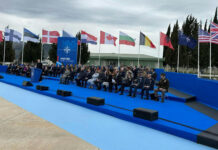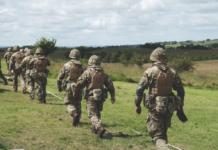Modernisation activities for firearm systems aim to increase the warfighter’s individual firepower in terms of precision, range, lethality, reliability and rate of fire. They are also intended to improve ergonomics and reduce the weight of the combat load. Another aspect is the increasing digitisation of the battlefield.
Each individual firearm is a modular system and the infantry toolbox, therefore, a ‘system of systems’. The firearm system includes the weapon itself, the associated ammunition range, optics and optronic attachments as well as other peripheral equipment, such as a bayonet, sling, magazines and magazine pouches, cleaning kit, and so on. In a broader sense, training is also part of the firearm system. Weapon families offer the advantage of largely identical operability and a high degree of parts uniformity. Although this has a positive effect on training and logistics, the family concept can usually only be consistently implemented in individual systematic groups of the infantry ‘toolbox’.
To put it candidly, the procurement of a new firearm system is not limited to handing out more tactical guns to the grunts. Rather, it involves changes in the stocking of spare parts, peripheral equipment and ammunition. Furthermore, adjustments to maintenance and overhaul processes and technical documentation must also be taken into account. In addition, weapons, shooting, tactics and technical training (often including infrastructure) usually need modification. Particularly in larger organisations, such as armed forces, cross-sectional firearm systems are generally designed for long service life. New procurements are usually made only after profound technological and tactical knowledge has been gained or when a fielded system can no longer be sufficiently modernised or supplied. The latter happens because, incomprehensibly, not every state defines firearm as a ‘key national technology’. Smaller organisations, on the other hand, can usually be a little more flexible and, for example, procure special solutions. Basically, the ‘system of systems’ approach offers three possibilities for modernising the stock of firearms: adaptation/upgrading of existing stocks, procurement of more modern systems on the market, or initiatives for the development of new system components or entire systems.

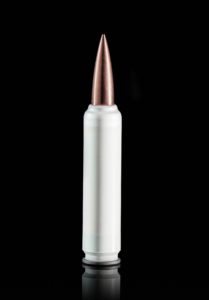
Adaption of Firearms in Stock
It was not until 2019 that Portugal’s navy decided to make its G3 stocks more modularly expandable with new add-on parts from the Swedish tuning specialist Spuhr. Switzerland still issues the assault rifle 90 (SIG 550) as a personal weapon and the short assault rifle 04/07 (SIG 553) as corps material. As part of the Swiss 2019 armaments programme, almost 10,000 units of the Laser Light Module 19 (Rheinmetall Vario Ray) are now being phased in as combat upgrade. To be able to use these, minor modifications to the handguards of the weapons are required.
As early as April 2018, the UK Armed Forces had decided to retain the SA80 bullpup assault rifle, alias L85, originally developed by the Royal Small Arms Factory in Enfield, and to have it modernised by Heckler & Koch, as they had first done in 2000. Starting in autumn 2019, the upgraded SA80A3 variant is fielded. The improvements include a new assault grip, an improved upper receiver, additional safety functions and weight reduction measures. The modifications are carried out in Oberndorf, while system assembly is carried out at HK’s UK subsidiary Nottingham Small Arms Facility in the UK. The Austrian Armed Forces also remain loyal to a bullpup weapon, namely the Sturmgewehr 77 – alias Armee Universalgewehr (AUG). Its manufacturer – Steyr Arms – has constantly improved this product. The AUG A3 version with additional mounting rails and a new bolt release button is the starting point for the StG 77 A1 KPE (Kaderpräsenzeinheiten) and StG 77 A2 Kdo (Kommando) variants newly procured by the Army.
Procuring Modern Systems on the Market
Like Austria, Australia is sticking with the bullpup system – but with a more modern model. Australia is replacing the AUSteyr F-88 AUGS, manufactured under licence at Lithgow Arms (now part of Thales), with the new F90 version developed by Thales. Its designers placed a particular emphasis on weight reduction and improved ergonomics. This was expressed in a fluted barrel, a new bolt and a new combined receiver and barrel assembly. A bolt release lever similar to the one on the AUG A3 is intended to speed up tactical reloading, and a deflector on the ejection port is intended to optimise left-handed shooting. The F90 also includes a 40mmx46 grenade launcher, which can be quickly attached. The F90 is delivered to the troops as enhanced F-88 (EF-88).

China and France, on the other hand, turned away from the bullpup design. The first units of the Chinese People’s Liberation Army paraded in 2019 on the 70th anniversary of their state with allegedly QBZ-191 named gas-operated short stroke piston rifle in classical architecture. Like the previous standard weapon QBZ-95, it is chambered for calibre 5.8mm x 42, but in more modern laboratories. In September 2016, the Poilus decided to replace the FAMAS with the HK416F. Since 2017, 107,000 rifles have been procured in two configurations: ‘S’ (standard) and ‘C’ (Commando, 11″ barrel). In addition, there are 10,767 HK269F grenade launchers. At the beginning of 2020, two more modernisation decisions were taken on the Seine. For example, 2,620 FN SCAR-H PR will be added as a semi-automatic precision rifle (Fusil de précision semi-automatique) and a variant of the Glock 17 Gen 5 as Pistolet Automatique de Nouvelle Génération (PANG). In total, the Poilus will receive 74,596 pistols. The scope of supply includes matching holsters (BLACKHAWK T-Series), 7,000 silencer kits, 15,000 laser light modules, 9,000 training weapons, 45 million cartridges with full metal jacket bullets, two million cartridges of subsonic ammunition, four million cartridges of marking ammunition and other accessories. The Czech company Sellier & Bellot was chosen as the ammunition manufacturer. The training kits come from Ultimate Training Munitions.
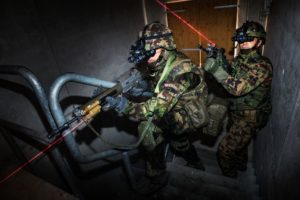
Portugal is currently modernising, among other things, clothing and personal equipment as well as its stock of firearms as part of the ‘Sistemas de Combate do
Soldado’ project. As recently as February 2019, Portugal commissioned FN Herstal to supply FN SCAR assault rifles and FN Minimi MK3 machine guns in 5.56mm x 45 and 7.62mm x 51 as well as FN40GL grenade launchers. This procurement process was initiated through the NATO Support and Procurement Agency (NSPA). A new service pistol is also being procured through the NSPA. The Portuguese also chose a version of the Glock Gen 5. The US Armed Forces and Denmark introduced the SIG Sauer P320 as a new service pistol. The US project ‘Modular Handgun System’ is one of the largest of its kind. Here, 280,000 P320 Full Size (M17) and 231,000 P320 compact (M18) will join the troops.
A National Key Technology
France, Portugal, Denmark and other states have recently had to procure their small arms systems abroad due to a lack of domestic capacities. Other NATO states, on the other hand, such as Belgium (FN Herstal) and Italy (Beretta), can fall back on domestic production capacities.

In Poland, the Fabryka Broni Lucznik Radom arms factory is one of the suppliers to its own army. In 2017, it received an order to supply 54,000 new assault rifles named GROT (‘SPEARHEAD’).This means that the weapon developed under the project name ‘Modular Small Arms System’ (Modulowy System Broni Strzeleckiej) is now finally joining the force. Among the first users, are the newly established territorial forces. The Polish Armed Forces also ordered a new service pistol in 9 x 19mm calibre from FB Radom. 20,000 new VIS 100 are to be procured, a relatively conventional hammer-fired pistol with a light metal frame.
With the Ceska Zbrojovka (CZ) arms factory, the Czech Republic has a domestic player for firearm development and production. The current product range includes the CZ 805 Bren 1 assault rifle and the modernised Bren 2, both of which are now in the national arsenal and, in part, Slovak armed forces. CZ also offers two modern military pistol families – one hammer-fired and one striker-fired – as well as the EVO submachine gun (9mm x 19).
The factory also offered its modern firearms to NATO partner Hungary who, in March 2018, decided to modernise its small arms inventory with CZ products. However, Hungary attaches great importance to ‘know-how’ transfer and to having domestic production capabilities. Thus, the CZ Bren 2 assault rifle, the EVO submachine gun and the P-07 and P-09 cock-lock pistols are licence-produced in Hungary.
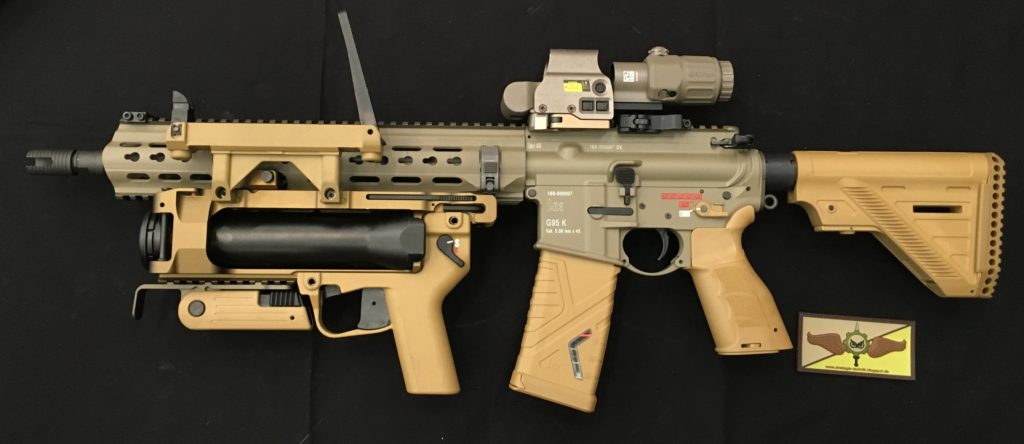
In Germany, under the aegis of dearly advised armament reformers, small arms have not made it onto the shortlist of national key technologies. Nevertheless, products from the two traditional German firearms factories in Oberndorf and Suhl are in the final round of the project to replace the G36 with the new ‘German Armed Forces Assault Rifle System’. Because of public procurement law, the official and industrial sides are remaining silent. Probable candidates are: C.G. Haenel with the MK556 and Heckler & Koch with the HK416 and HK433 models. A decision is expected at the end of the second quarter of 2020. Independently of this project, the G95k ‘Special Forces Lightweight Assault Rifle’ project ran smoothly. Here, a version of the HK416A7 was able to assert itself. Other German projects include a harmonised MG4/MG5 machine gun family as well as the pistol, cross sectional and the ‘Special Forces Pistol System’.
The Russian armed forces decided in favour of two new assault rifles from the Kalashnikov Group (the former Izhmash = Izhevski Mashinostroitelni Sawod/Izhevsk Machine Factory). The new standard assault rifle AK-12 in 5.45mm x 39 is based on the AK-74M with regard to its operating elements. An almost identical AK-15, but adapted to the M43 cartridge (7.62mm x 39), is also intended to complement the Russian infantry toolbox. Although the AK-12 and AK-15 feature the classic gas piston system with rotating bolt, the designers redesigned the receiver, barrel and the bolt system. Other details include telescopic shoulder stocks and picatinny type rails on top of the receiver and hand guard. Both assault rifles can continue to use AK-74 or AK-47 magazines.
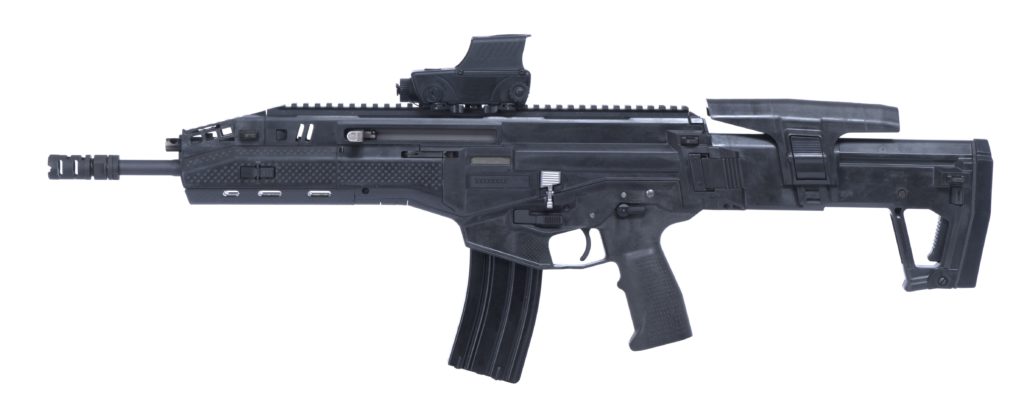
The US Army Next Generation Squad Weapon Project
Technically speaking, the above-mentioned modernisations are only to a limited extent radical new developments. After all, relatively conventional systems are procured in established calibres. During the Cold War, Germany had already developed a completely new system with the G11 assault rifle project in 4.7 mm caseless. By the end of the Cold War, this technologically complex system was abandoned. The US Army is currently undertaking a new approach. With the project ‘Next Generation Squad Weapon’ (NGSW), they want at least partly to replace the M16/M4 family by a NGSW rifle (NGSW-R) and the light machine gun M249 Squad Automatic Weapon by a NGSW-Automatic Rifle (NGSW-AR). Both weapons are intended to fire ammunition still to be developed, but for which a new projectile is specified: the 6.8mm General Purpose Projectile. This ammunition, which is to be seen more in relation to the 7.62mm x 51 than the smaller 5.56mm x 45, should not be confused with the 6.8 SPC projected earlier. Furthermore, according to the US Army, the NGSW weapons should also use AI algorithms for more effective deployment through modern sights and attachments. On 29 August 2019, the US Army commissioned three companies to develop NGSW prototypes. General Dynamics OTS Inc., Textron Systems and SIG Sauer Inc. are each to develop two types of firearms and the corresponding ammunition. The project will last up to eight years, with weapons and ammunition expected to be delivered within 27 months of the award of the contract.
RM277 Weapon System
General Dynamics Ordnance and Tactical Systems is proposing its RM277 weapon system and has teamed up with ammunition manufacturer True Velocity, silencer specialist Delta P Design and weapons manufacturer Beretta Defence Technologies. Both the RM277-Rifle and the RM277-Automatic Rifle are bullpup designs. They are magazine-loaded, gas and recoil operated, impulse averaged air-cooled guns. They operate according to the Short Recoil Impulse Averaging Technology, patented in 2012, already used in the General Dynamics Lightweight Medium Machine Gun chambered for .338 Norma Magnum. Thanks to this impulse averaging system with a short recoil, the guns should be able to hold their target well even when firing bursts and enable precise fire even at long range.
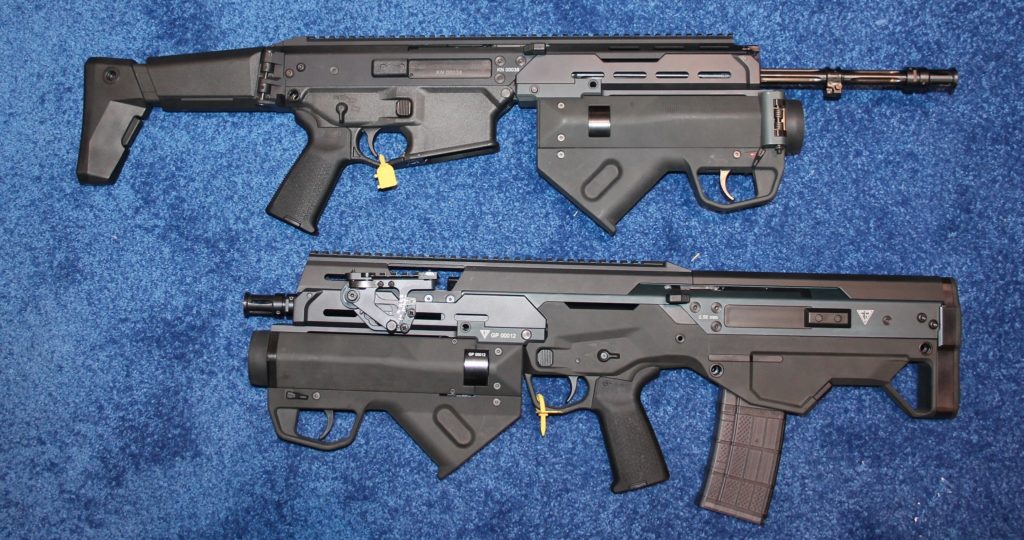
The RM277 weapon system is developed around the True Velocity cartridge 277 TVCM. It carries the 6.8 General Purpose Projectile required by the US Army in line with the tender. The case is largely made of new and 100% recyclable composite material. The composite case is designed to insulate the cartridge chamber and bolt face from heat transfer, which reduces wear and tear on the weapon system. More efficient combustion of the compacted propellant powder should lead to lower standard deviations, higher bullet velocities, consistent precision and lower muzzle signatures. Furthermore, the ammunition does not contain any heavy metals that are harmful to public health. Moreover, the composite case and compacted propellant technology contribute to a weight reduction of 30% to 40% compared with conventional ammunition with a brass case. Thanks to ‘significantly reduced production space’, the ammunition could even be manufactured ‘in-theatre’ if required.
Textron Systems
Textron Systems has been working on telescoped caseless ammunition and telescoped ammunition with polymer cases since 2004, among other things as part of the ‘Lightweight Small Arms Technology’ (LSAT) project. The latter appeared to be gaining ground and has already been introduced in various calibres. A light machine gun with long-stroke gas piston system and moving cartridge chamber was also developed within this project.
The Cased Telescoped (CT) technology is now also being incorporated into Textron’s NGSW approach. Textron has teamed up with Heckler & Koch and Olin Winchester for the’6.8 CT NGSW’ project. Heckler & Koch is contributing its expertise in weapons development and production. Olin Winchester produces the 6.8mm CT ammunition. In total, Textron Systems supplies 43 6.8CT NGSW-AR, 53 6.8 CT NGSW-R and 845,000 cartridges.
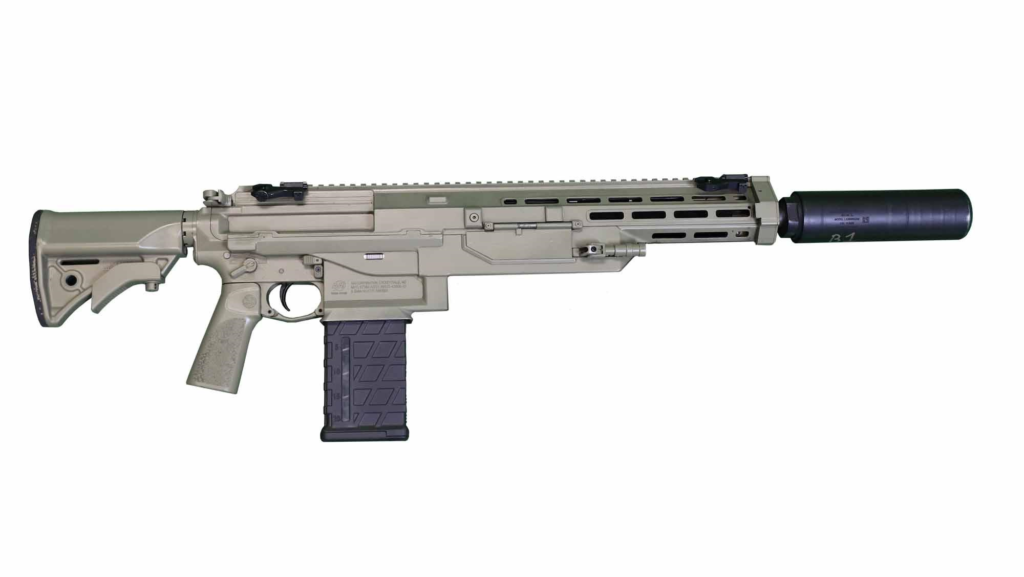
According to Textron Systems, the 6.8 CT delivers significant performance gains, greater precision and a higher muzzle velocity, while at the same time significantly reducing the weight of the weapon and ammunition by around 40%. A new silencer technology is also expected to help reduce muzzle signatures and improve overall control of the weapon.
SIG NGSW-R and NGSW-AR
SIG Sauer pursues a system house approach and offers weapons, ammunition and optics. In the NGSW project, the company proposes the SIG MG-6.8 as NGSW-AR and the SIG MCX-SPEAR as NGSW-R. Both weapons are designed for a new hybrid ammunition in 6.8 mm x 51 calibre. The SIG MG-6.8 is a lightweight machine gun with short-stroke gas piston system. It has a quick attachment interface for a belt box, while a magazine feed is not provided. At 5,440 grammes, the gun weighs 35% less than a comparable MK48 Mod 1. The weapon fires from the open bolt and features a recoil mitigation system. The feed-tray opens to the side. This allows optics easily to be used with in-line mounted night vision devices. The manual safety can be activated in any loading condition. The standard barrel comes in 16″ length (406 mm). The functional and operational safety certification of the US Army is available.
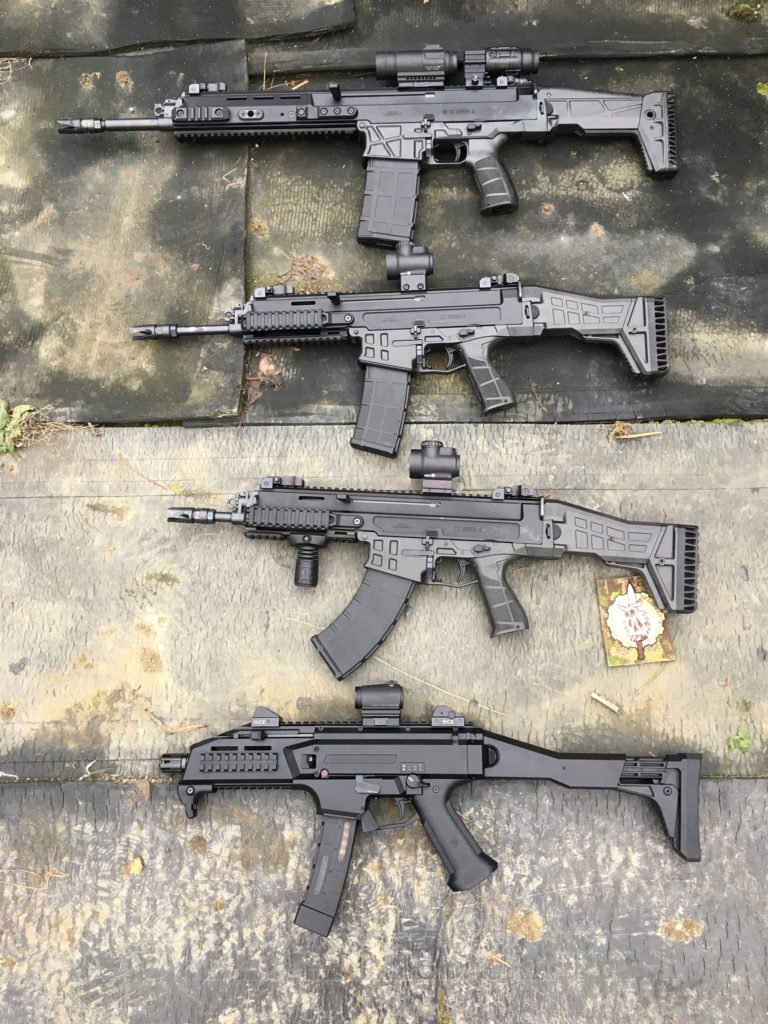
The SIG MCX-SPEAR also works with a short-stroke gas piston system. It features a mechanism with a double charging leaver. The weapon can be charged either in the classic AR-15 manner with the charging handle on the rear or with a smaller charging handle, which folds up on the left side of the receiver. The weapon is ambidextrous and has a 13″ barrel. Silencers of the latest generation can be used. The associated hybrid ammunition has the specified 6.8mm bullet and a combined steel and brass case. This allows weight savings of up to 20% compared with conventional ammunition. According to the company, the recoil of this ammunition fired from the SIG MG-6.8 is comparable to that of a 5.56mm x 45. However, the 6.8mm x 51 brings a significantly greater impact to the target at an effective range of 1,200 metres. Both the SIG MG 6.8 and SIG MCX SPEAR are multi-calibre capable systems, which can be chambered for other ammunition, such as 7.62 mmx 51 or 6.5 Creedmoor. Hybrid ammunition is also to be made available in other calibres.
New Machine Guns in New Calibres
With its NGSW designs, SIG Sauer contributes its experience with another new weapon, the SIG Sauer MG338. This has already been procured by the US Special Operation Command. The SIG MG338 is a belt-fed, light mid-range machine gun in calibre .338 Norma Magnum (8.6 x 64mm). It is comparatively light at slightly less than 10 kg. The weapon works with a short-stroke gas piston system and has a specially developed recoil mitigation system, which is intended to make the felt recoil comparable to that of a weapon in 5.56 x 45mm. The weapon fires from the open bolt and has ambidextrous controls. The charging handle and feed tray can be swapped to the other side of the weapon. The manual safety can also be activated in any loading condition.

The SIG MG 338 complements the MGs currently in use in the infantry toolbox of the US army. Weighing less than a universal 7.62mm x 51 MG, it is more effective at significantly longer ranges. At up to 2,000 metres, it even comes close to the Browning M2 in calibre .50 BMG (12.7mm x 99), while the SIG MG338 weighs only about a quarter as much and can be operated by one shooter. Similarly, according to the company, the new silencer not only reduces the muzzle signatures, but also the harmful effects of the muzzle gases on the shooter.

At the SHOT Show 2020, Dillon Aero presented the prototype of a Gatling system also in the .338 Norma Magnum. Interestingly, unlike the proven M134D, this one had only five instead of six barrels. The company also showed the weapon together with True Velocity, which presented an associated lighter .338 Norma ammunition with polymer case.
Conclusion and Outlook
This overview of the major international firearms modernisation projects of recent years shows that progress is often achieved by adapting and modularising existing stocks. In the meantime, the philosophy of basic weapons and supplementary kits has become established. Even when switching to new systems, procurers usually stick to what is largely tried and tested. One reason for this is that new technological approaches have not yet been able to establish themselves sufficiently in series production. On the other hand, in recent years, the performance of the firearms systems has been enhanced through improved optics and optronics, improved ammunition and – observe closely – by a new awareness of the importance of thorough shooting and combat tactics training. Therefore, it follows from all this that a drastic system change could hardly be justified strategically, technologically and economically to this point.
It remains to be seen whether the US Army’s NGSW project, in particular, will produce a new generation of firearms. Regardless of this, the next milestones will be in the field of optics and optronics – not only in terms of increased hit probability but also in terms of networking and AI-based target discrimination and prioritisation. Whether a technological ‘game-changer’ will come with the ammunition does not seem impossible. Of course, it remains to be seen which technological approach proves to be suitable for the field, because in war, as is well known, only the simple has success. Nevertheless, thorough research and development work in all areas of firearm systems will continue to make sense in the future, because the individual firepower of the soldier will also form a central effector in the digitised and networked battlefields of the hyperwar.
Author: Jan-P. Weisswange PhD is a communication manager in the defence industry. This article reflects his own personal opinion.







